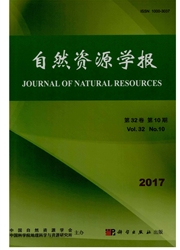

 中文摘要:
中文摘要:
依据内蒙古地区47个地面观测站1981-2010年降水资料,采用标准化降水指数(SPI)作为干旱指标,分析了内蒙古地区年度和四季干旱发生的频率、干旱强度和站次比(发生干旱站数与总站数之比)的演变特点。结果表明:年度、秋季和冬季干旱强度变化趋势不明显,春、夏季干旱强度呈显著上升的趋势;近30a来年尺度上干旱强度表现为轻度干旱,四季干旱强度以轻度干旱为主;年、季尺度上干旱发生的覆盖范围为局域性干旱和区域性干旱;内蒙古东北部呼伦贝尔盟是年度干旱、中旱、重旱与特旱发生频率最高地区,而西部阿拉善盟地区干旱、中旱、重旱和特旱发生的频率相对较低;从季节上来看,内蒙古全区春、冬季干旱(含中、重和特旱1发生频率较为一致,表现为西部及西南部地区干旱发生的频率较低,而东部、中部、北部地区干旱发生的频率相对较高。
 英文摘要:
英文摘要:
The evolution characteristics of the annual and seasonal frequency, intensity and coverage of drought in the Inner Mongolia region for the past 30 years were analyzed based on the standardized precipitation index (SPI) as a drought index with the data of monthly precipitation of 47 ground meteorological stations during the period from 1981 to 2010. The drought coverage is defined as a ratio that the number of drought occurrence stations occupies the total observed stations. Results show that the trends of the annual, fall and winter drought intensity were not obvious over the past 30 years, while the trends in spring and summer increased significantly. The drought intensity at the annual and seasonal scales exhibited a mild level over the past 30 years. The drought coverage appeared as the features of the local and regional drought at the seasonal and annual scales. The northeastern Inner Mongolia, Hulunbeier, is a region where the annual drought, moderate, heavy and severe drought are all most likely to occur, and should pay special attention to it in order to reduce the damage, while the frequency of drought occurrence in the western Alashan League is relatively low. From the perspective of seasonal scale, the frequency of drought occurrence in spring and winter demonstrated consistency, including the level of moderate, heavy and severe drought. That is, the frequency of drought occurrence in the western and southeastern Inner Mongolia was low, while the eastern, central, and northern parts were relatively high. These findings provide valuable insights into the drought monitoring, early warning and drought disaster mitigation project in the context of global climate change.
 同期刊论文项目
同期刊论文项目
 同项目期刊论文
同项目期刊论文
 The joint return period analysis of natural disasters based on monitoring and statistical modeling o
The joint return period analysis of natural disasters based on monitoring and statistical modeling o Quantifying cascading effects triggered by disrupted transportation due to the Great 2008 Chinese Ic
Quantifying cascading effects triggered by disrupted transportation due to the Great 2008 Chinese Ic Local spatial and temporal factors influencing population and societal vulnerability for natural dis
Local spatial and temporal factors influencing population and societal vulnerability for natural dis Disaster Risk Decision A Dynamic Computable General Equilibrium Analysis of Regional Mitigation Inve
Disaster Risk Decision A Dynamic Computable General Equilibrium Analysis of Regional Mitigation Inve Modeling the economic costs of disasters and recovery analysis using a dynamic computable general eq
Modeling the economic costs of disasters and recovery analysis using a dynamic computable general eq Analyzing regional economic impact andresilience a case study on electricity outages caused by the 2
Analyzing regional economic impact andresilience a case study on electricity outages caused by the 2 期刊信息
期刊信息
